This article was co-authored by Chris M. Matsko, MD. Dr. Chris M. Matsko is a retired physician based in Pittsburgh, Pennsylvania. With over 25 years of medical research experience, Dr. Matsko was awarded the Pittsburgh Cornell University Leadership Award for Excellence. He holds a BS in Nutritional Science from Cornell University and an MD from the Temple University School of Medicine in 2007. Dr. Matsko earned a Research Writing Certification from the American Medical Writers Association (AMWA) in 2016 and a Medical Writing & Editing Certification from the University of Chicago in 2017.
There are 12 references cited in this article, which can be found at the bottom of the page.
This article has been viewed 58,443 times.
The purpose of a medical abstract is to provide a concise and useful summary of a longer medical article or study. A good abstract informs readers briefly of the research and ideas that are presented in the full article. Before writing the abstract, be sure you understand the research you're summarizing. Describe the background to your research, your expectations or hypotheses, the methods you used, and the outcomes of your medical investigation.
Steps
Getting Ready to Write the Abstract
-
1Read a style guide. Review the information in the book AMA Manual of Style: Guide for Authors and Editors. This book will have detailed information on how to formulate an abstract that is constructed correctly. You can also access it online at http://www.amamanualofstyle.com/
-
2Read other abstracts.[1] Reading other medical abstracts will give you a sense of what kind of information they should have. Pay attention to tone, length, and structure of other medical abstracts, especially ones related to research in your field or abstracts published in the journal for which you are writing the abstract.Advertisement
-
3Be sure you understand the research.[2] Typically, you will write an abstract based on research that you conducted either alone or as part of a team. Be sure you are completely knowledgeable and comfortable with the larger project or paper that the medical abstract is summarizing. Read it a few times, and practice explaining it to others. If you are writing a medical abstract on behalf of someone else, consult them with any questions you may have about the research.
-
4Read the instructions.[3] Every medical journal has specific guidelines for publication regarding article abstracts. If you’re publishing an abstract for a conference presentation, contact the university or professional society for directions. Your abstract will probably need to stay within a certain word count, usually 100 – 400 words, so be as direct as possible in your writing.[4]
-
5Write the abstract in a timely manner.[5] Typically, the shorter the abstract, the more difficult it is to write. Cramming meaningful text about a large medical study or research project into a limited space can be challenging, while talking at length about the many details of the project is easy. Give yourself a head start on your medical abstract by getting it down well in advance of its due date.
- If you have co-authors on the publication, have them look over a draft of the abstract before submitting it.
- If you don’t have co-authors, submit a draft of the abstract to a peer in your field of research, or a trusted mentor knowledgeable about the abstract submission and publication process.
Providing Essential Information
-
1Explain why you began the research.[6] This section should explain in a sentence or two what inspired the research. What problems remained unsolved by previous research? Demonstrate why the question needs to be answered, and how it has not been answered, or has been only inadequately answered in the past.
- For instance, you might write, “Livingston (2009) has demonstrated the efficacy of nucleotide reparation in E. Coli UBPs.”
-
2State your project’s goals and expectations. After stating the background or inspiration to the research, state your own research goals and hypotheses. This emphasizes your honesty and objectivity as a researcher up front. Be direct and succinct when stating your goals and hypotheses.
- For instance, you might write, “Our hypothesis was that medication X was superior in treating epilepsy than medication Y.”
- Some medical abstracts do not require a background section. In an abstract without a background section, you will start the body of your abstract with information on the goals and expectations of your research.[7]
-
3Outline your methods.[8] This section basically answers the question, “How did you investigate the topic or problem?” Structured medical abstracts provide a specific section where methodology can be explored in detail over five or six sentences.[9] Be careful not to over-describe. If you utilized a common procedure or technique, simply say that you used it, do not go into great depth about the technique or procedure itself.[10] There are several areas related to your methods that you should address, including:[11]
- Setting — Where did you conduct your research?
- Sample size —How many individuals participated in the research? How were they selected? This includes animal populations as well.
- Design — How were measurements and statistics recorded?
- Variables — What were the specific variables you looked at? How did you account for them?
- Interventions — How did you intervene to manipulate the variables?
-
4Summarize your findings.[12] State the results of the research in six to eight brief sentences. Use specific numbers and statistics when reporting your findings. For instance, you might write, “Use of the medication resulted in a 30% decline in mortality rate.” Support all of the findings with hard data and, if appropriate, brief narratives about experiences or outcomes.
- Do not provide interpretation of your results in this section. Interpretation and analysis should be saved for the conclusion.
- Do not include tables or charts in your abstract. These should be included in the main body of the paper.
-
5Conclude the abstract.[13] The conclusion should be composed of one or two sentences that help the reader understand the results and implications of your research. Connect the results of the study to the methods used to attain them, and to the original research question. This is a place to discuss whether your hypothesis was correct and whether the original purpose was achieved. You should basically be addressing the question, “Did your research and findings produce the answer you expected?” Summarize significant implications your research may have and recommend further research, if necessary.
Putting the Finishing Touches on Your Abstract
-
1Choose a title.[14] Your title should express the specific topic or methodology you’re publishing about. Don’t select a title that announces results. This may bias readers against your conclusions or discoveries. Instead, select a title that is objective and describes the problem your research explores.
- For instance, “New Corticosteroids Provide Asthma Relief” is a poor abstract title.
- “Corticosteroid Treatment in Asthmatic Patients,” on the other hand, is a good title.
- Don’t use puns or jokes in your title. This may make your work seem trivial and unimportant.
-
2List the authors.[15] Directly following the title, you should list the author or authors. Guidelines specific to the publication or organization will dictate how the authors’ names should be listed. Some abstracts place the first name after the last (“Smith, John”) while others place the first and last names in their natural order (“John Smith”).
- Some abstracts expect you to list all authors in alphabetical order according to their last names.
- Other publications might expect you to list authors of increasing seniority toward the end of the author list. In this arrangement, the study’s lead researcher or team mentor would be listed last.
- You might also need to list each author’s credentials. For instance, you might need to write “John Smith MD”
- The title and authors should be listed at the top of the abstract, and before the main information of the abstract.
-
3Edit your abstract.[16] When the medical abstract is completed, your peers will be looking for originality, scientific merit, clinical significance, and whether it is appropriate for the audience of educated medical staff professionals for which it is intended.
- Additionally, remember to proofread your work. Spelling errors, typos and grammatical mistakes will discredit your hard work and research.
- It might help to read the abstract out loud to yourself to make sure it sounds right before submitting it. Ask a colleague to read over it for you to ensure it is easy to understand and makes sense.
- After you’ve edited the abstract, submit it to the appropriate journal, professional society, or conference committee for approval.
References
- ↑ http://rc.rcjournal.com/content/49/10/1206.full.pdf
- ↑ https://www.academia.edu/3697187/Good_Abstract_Writing_for_a_Medical_Science_Journal_Article_The_Tits_and_Bits
- ↑ http://rc.rcjournal.com/content/49/10/1206.full.pdf
- ↑ https://www.academia.edu/3697187/Good_Abstract_Writing_for_a_Medical_Science_Journal_Article_The_Tits_and_Bits
- ↑ http://rc.rcjournal.com/content/49/10/1206.full.pdf
- ↑ http://rc.rcjournal.com/content/49/10/1206.full.pdf
- ↑ https://www.academia.edu/3697187/Good_Abstract_Writing_for_a_Medical_Science_Journal_Article_The_Tits_and_Bits
- ↑ http://rc.rcjournal.com/content/49/10/1206.full.pdf
- ↑ https://www.nlm.nih.gov/bsd/policy/structured_abstracts.html
- ↑ http://www.ruf.rice.edu/~bioslabs/tools/report/reportform.html#form
- ↑ https://www.acponline.org/membership/residents/competitions-awards/acp-national-abstract-competition/guide-to-preparing-for-the-abstract-competition/writing-a-research-abstract
- ↑ https://www.nlm.nih.gov/bsd/policy/structured_abstracts.html
- ↑ https://www.nlm.nih.gov/bsd/policy/structured_abstracts.html
- ↑ http://rc.rcjournal.com/content/49/10/1206.full.pdf
- ↑ http://rc.rcjournal.com/content/49/10/1206.full.pdf
- ↑ https://www.academia.edu/3697187/Good_Abstract_Writing_for_a_Medical_Science_Journal_Article_The_Tits_and_Bits
About This Article
The best way to start a medical abstract is to begin with one or two sentences of background about why you did the research. For example, you might write, “Livingston (2009) has demonstrated the efficacy of nucleotide reparation in E. Coli UBPs”. Once you’ve stated the background and inspiration for your research, you should state your own goals and hypotheses while emphasizing your objectivity as a researcher. In the next section of your abstract, provide an outline of your methods that answers the question, “How did you investigate the topic or problem?”. Though you should avoid over-describing your methods, make sure you include things like the research setting, sample size, design, variables, and interventions you made to manipulate the variables. Finally, you’ll want to take 6 to 8 sentences to briefly summarize your findings using specific numbers and statistics. For more help from our Medical co-author, like how to title your abstract, read on!
















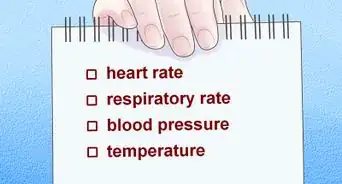


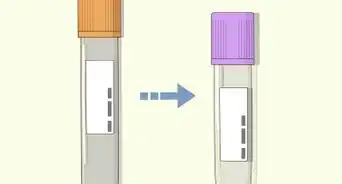

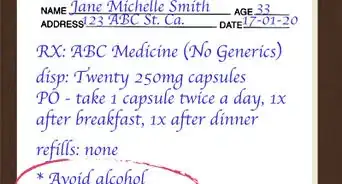


-Tube-Step-17.webp)
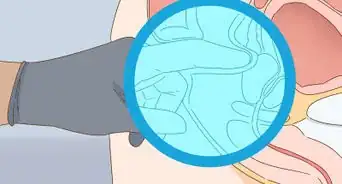












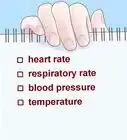



































Medical Disclaimer
The content of this article is not intended to be a substitute for professional medical advice, examination, diagnosis, or treatment. You should always contact your doctor or other qualified healthcare professional before starting, changing, or stopping any kind of health treatment.
Read More...